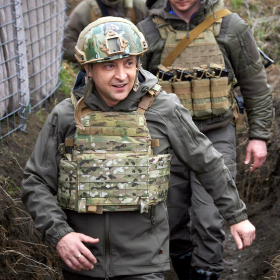Denmark’s Controversial Decision: Troops to Ukraine for ‘Learning’

Image credit: Armstrong Economics
As the ongoing conflict in Ukraine intensifies, Denmark, a prominent NATO member, is readying to deploy troops to the war-torn nation. This move has raised eyebrows and sparked heated discussions about the consequences of such a decision. Major General Peter Boysen, Denmark’s commander-in-chief, claims the deployment aims to provide military personnel with a firsthand learning experience in modern warfare. However, this begs the question: can any troop deployment in an active war zone remain entirely observational?
The Rhetoric of Peacekeeping
While the Danish government insists that these troops will not engage in combat but merely observe, the realities of war paint a different picture. Russia has already retaliated with stern warnings, asserting that any military personnel present in Ukraine will be viewed as “legitimate targets.” This raises alarming concerns about the safety of Danish troops and the potential for escalation into broader conflict.
The notion of “unarmed” soldiers in a war zone, especially one where drone warfare and artillery play significant roles, appears naive at best. With over 70% of Ukraine’s combat relying on rapidly evolving drone technology—of which 96% of approximately 1.5 million drones bought in 2024 were locally manufactured—the line between observation and involvement could blur quickly.
Learning from the Frontlines
General Boysen’s comments hint at an underlying strategy. “We can learn a lot from the combat experience they have gained in Ukraine,” he stated. This eagerness to gain insights from Ukraine’s dynamic warfare tactics highlights a vital element of modern military strategy: adapting and evolving based on real-world encounters. However, it remains to be seen whether mere observation can indeed translate into actionable intelligence back in Denmark.
A Financial Commitment to Ukraine
Denmark has already committed significant resources to support Ukraine, pouring over 8.5 billion euros into aid via the Danish Ukraine Fund since the onset of the war. This makes Denmark one of the largest European donors to Ukraine, second only to Germany. Their “Danish Model” has facilitated direct purchasing of arms and military supplies from Ukrainian manufacturers, establishing a robust support system that helps enhance Ukraine’s defense posture.
This approach underscores Denmark’s broader geopolitical strategy, positioning itself not just as a supportive ally but as a crucial player in the European security landscape.
A Slippery Slope?
Despite the seemingly good intentions cloaked in the language of “peacekeeping,” critics argue that sending troops to observe a conflict could be the first step toward a more significant commitment, possibly leading NATO into a direct confrontation with Russia. The stark reality is that fatigued and poorly equipped troops in a hot war zone could easily become unintended casualties, escalating tensions further.
The Path Forward
As the world watches this situation unfold, the implications of Denmark’s actions cannot be overstated. The intertwining of military observation with potential conflict raises significant questions about NATO’s strategy in Eastern Europe. Could this be the beginning of a broader engagement that leads to open conflict, or will it remain a temporary measure aimed at improving military efficacy?
At Extreme Investor Network, we are committed to providing our readers not only with the latest developments in the economic landscape but also with the nuanced implications of military decisions in our interconnected global market. The stakes are higher than ever, and understanding these dynamics is crucial for any investor or interested observer. Join us as we continue to explore the multi-faceted impacts of geopolitics on economics and investment strategies.

